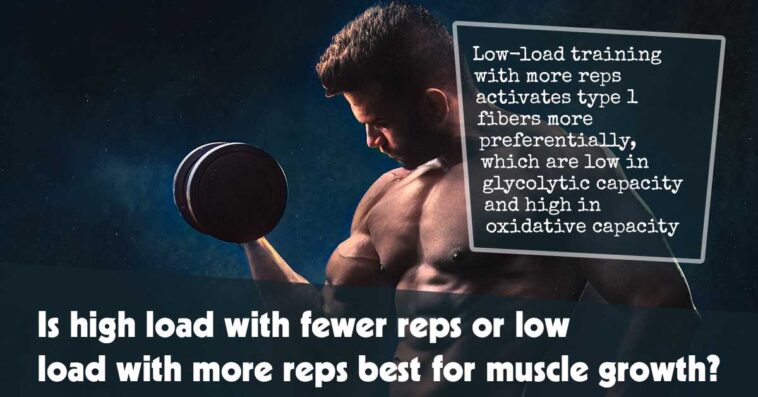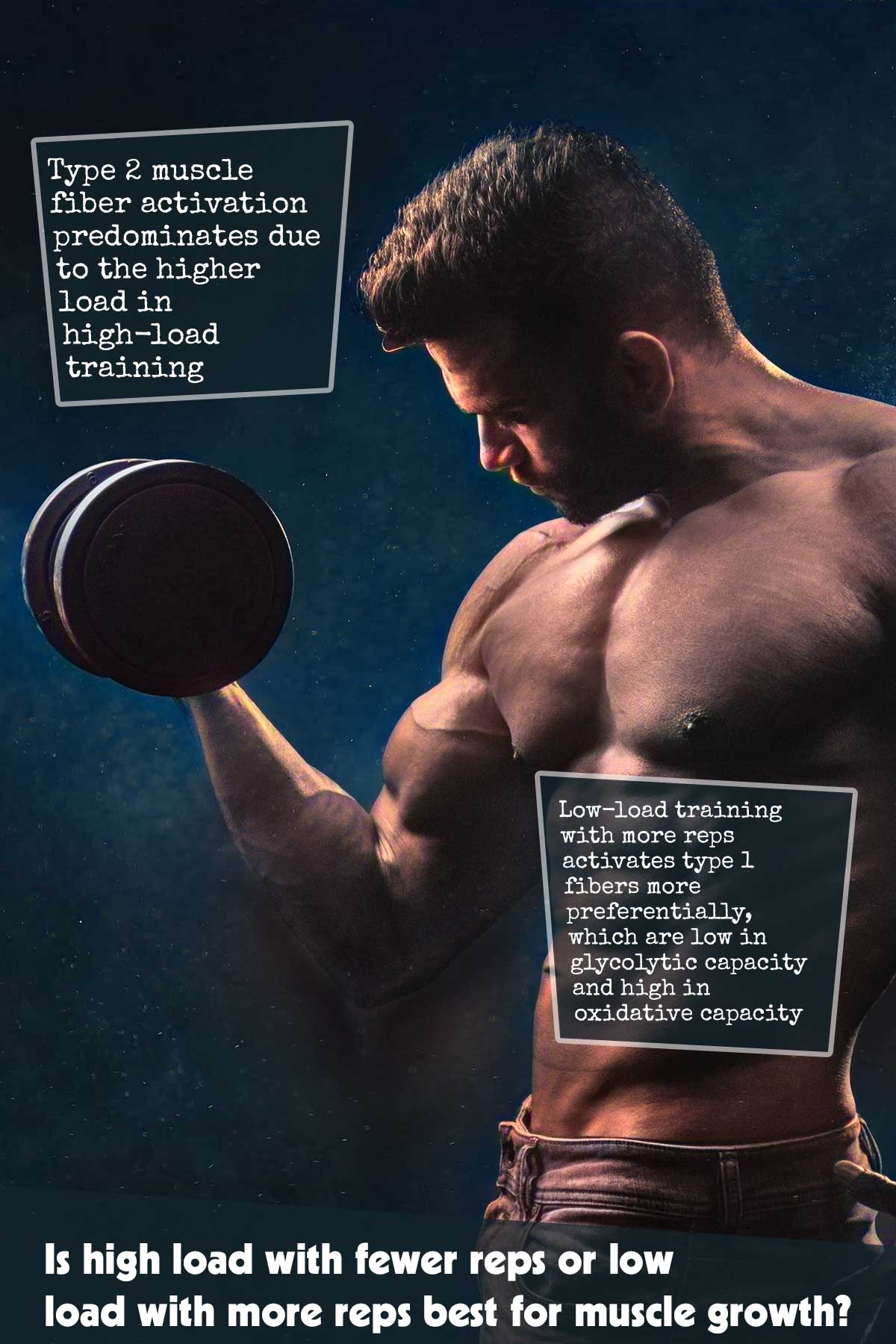As reported by a study, the type of resistance training, high load with fewer reps or low load with more reps, makes no difference in promoting muscle growth.1✅ JOURNAL REFERENCE
DOI: 10.3390/metabo13030335
The study lasted 8 weeks and involved 18 participants in 2 different training protocols. 1 group did high-load exercises with fewer reps, while the other performed low-load exercises with more reps. Muscle mass was measured in the 1st and final exercise sessions.
No difference was observed in metabolic stress or muscle growth when the 2 groups were compared by measuring compounds released into the bloodstream from exercising.
Each participant lifted as much as 80% of their body weight in the high-load group. The limit was 30% in the low-load group but the exercises were repeated until their muscles couldn’t lift the weight any longer.
Resistance training promotes muscle growth, but it’s still unclear if the key to muscle growth is the load or the number of reps. The study supports the notion that both kinds have the same impact.
The researchers also demonstrated that muscle activation takes place in a different way in each kind, even though metabolic stress is identical and the impact on hypertrophy is subsequently also the same.
In the assessments carried out before and after the 1st and final exercise sessions, blood samples were taken before exercises started, 5 minutes after exercises ended, and an hour after exercises ended. A metabolomic analysis was used to detect the metabolites in the blood samples.
Surface electromyography was used to measure muscle activation, in which electrodes monitor the muscles’ real-time electrical activity.
A stronger metabolic stress response was anticipated in the low-load group because theoretically, this additional stress should cancel out the reduced muscle activation level, but that wasn’t the case.
The analysis revealed that even though the muscle activation level was higher in the high-load group, the metabolic stress was comparable in both groups. The metabolic response similarities indicate that both kinds of training could be inducing hypertrophy by acting on the same pathways.
Variations were detected in 50 blood metabolites in response to muscle activation throughout both kinds of training. Not many of these metabolites however differed in the 2 groups and 6 of these metabolites were analyzed: phosphocreatine, creatine, carnitine, acetoacetate, 3-hydroxyisovalerate, and asparagine.
Even though no differences were found in the general metabolic response, there were some metabolite correlations with muscle hypertrophy in both of the groups. A few of these correlations could be linked to exercise-activated type 1 or 2 muscle fiber characteristics and also by the study’s training protocol metabolic demands.
Some of the metabolites examined are produced from anaerobic energy systems and are a result of muscle glycolysis (glucose breakdown) or phosphocreatine and creatine breakdown, which provides sufficient energy for maintaining exercise intensity for several seconds.
Acetoacetate and asparagine are linked primarily with the Krebs cycle, which makes use of oxygen and nutrients which include carbohydrates, protein, and fat for producing energy for the muscles and lasts much longer.
Phosphocreatine and creatine expression was anticipated to have a higher response to anaerobic exercise. The metabolism taking part there is typical of type 2 muscle fiber, referred to as ‘fast twitch’ fiber, while asparagine, for instance, could be present when the cellular respiration phase referred to as the Krebs cycle is more activated, and is type 1 muscle fiber characteristic.
Type 2 muscle fiber activation predominates due to the higher load in high-load training. These muscle fibers are low in oxidative activity but high in glycolytic activity and could be more hypertrophy responsive compared to type 1 fibers. However, low-load training with more reps activates type 1 fibers more preferentially, which are low in glycolytic capacity and high in oxidative capacity, and are very resistant to fatigue.




